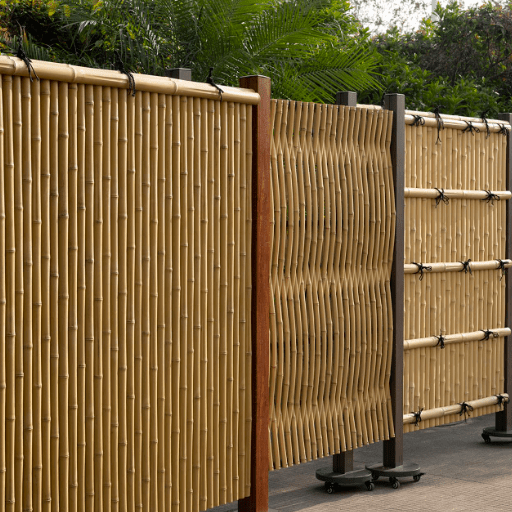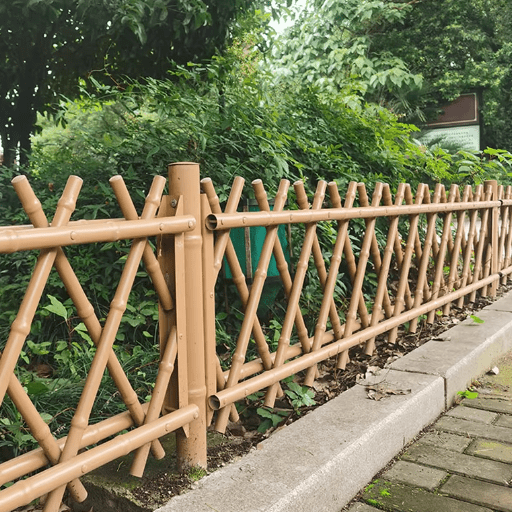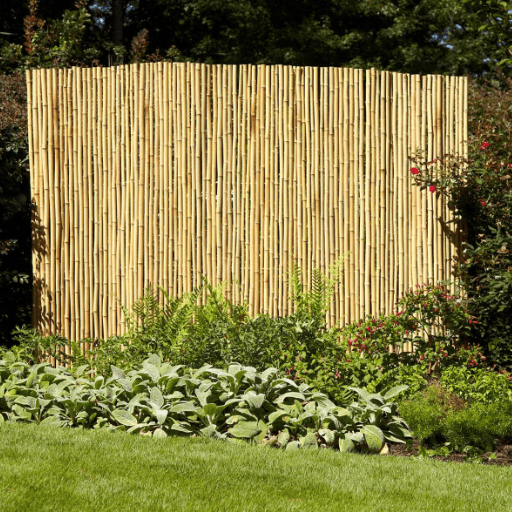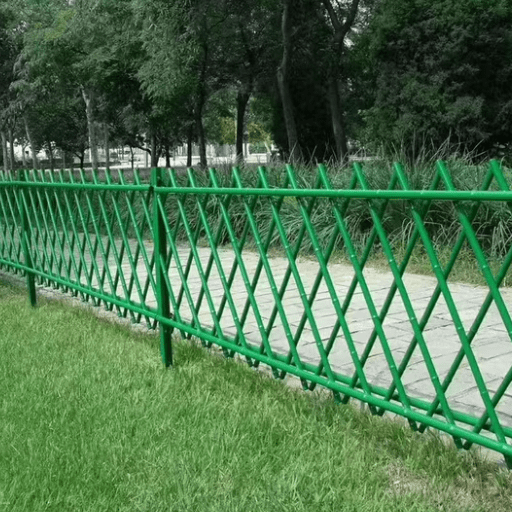When one talks about nurturing an outdoor area with calmness and seclusion, fencing becomes an essential consideration. Imitation bamboo fencing serves as a highly innovative solution that balances aesthetics, usefulness, and longevity. Imitation bamboo fences were designed to resemble the natural elegance of traditional bamboo, in addition to accommodating practically any limitations imposed on the use of traditional bamboo. Hence, they have gained much prominence among homeowners and landscapers in recent years. This article explores the versatility of imitation bamboo fencing by highlighting its unique appearance and robust construction, and examines the practical benefits of the fencing in contemporary outdoor design. Whether you want to heighten privacy or want just one of those greener alternatives to a decorative and artistic element of timeless style, an imitation bamboo fence offers a balanced mixture of good looks and resilience. Read on to find out why this fencing choice will be ideal for the transformation of the outdoor heat. View Imitation Bamboo Fence Manufacturers in China – Dingdian details to get into the details
Understanding Bamboo Fences

Imitation bamboo fences are designed to replicate the look of real bamboo, but with enhanced functionality and durability. Services including PVC, composites, or other synthetic materials, these fences are built to withstand weathering, insect damage, and require less maintenance compared to real bamboo. It also provides a greener and fairer option for creating a peaceful and tropical ambiance in residential or commercial outdoor spaces. Combining beauty with utility, imitation bamboo fencing appears to be a versatile choice for enhancing privacy, decoration, and eco-landscaping.
What is a Bamboo Fence?
In general, bamboo fences are constructed with either natural bamboo canes or synthetic materials designed to mimic the appearance and texture of bamboo. Bamboo fencing is renowned for its strength, beauty, and green stature-the ideal qualities for enhancing privacy and aesthetic value in outdoor environments. Natural bamboo fences are made from mature bamboo plants that rapidly grow, providing a great option for sustainability. In contrast, synthetic bamboo fences offer enhanced durability and require less maintenance. Typically used in gardens, patios, and commercial landscapes, bamboo fences are highly esteemed for creating a calm, Zen-like atmosphere and serve functional purposes, including privacy, wind protection, and property demarcation.
Benefits of Using Bamboo for Fencing
Bamboo fences offer numerous advantages due to their unique properties and versatility. The foremost advantage of its sustainability is that bamboo grows fast and is renewable, thus contributing to environmentally conscious construction ideals. It is lightweight and durable, ideally suited to various climate and weather hazards. Bamboo fences require the least maintenance compared to wood fences. Bamboo is naturally resistant to pests and can be treated to withstand wear and tear due to climatic conditions. Bamboo fencing also obstructs and shields privacy and sets a template for beautifying outdoor areas with a naturalistic modern look. With such attributes, bamboo stands out as an ideal material for fencing, whether for a residential or a commercial establishment.
Types of Bamboo Fences
Several varieties of bamboo fences exist, which cater to various functional and aesthetic needs. Rolled bamboo fences are flexible and easy to install, and are often used to cover existing structures or create temporary barriers. Panel bamboo fences use pre-assembled sections that give a firmer and uniform appearance, which is best for long-term use. Split bamboo fences are constructed from bamboo canes that have been halved, resulting in a rougher and more textural appearance, which is suitable for natural or traditional landscapes. Live bamboo fencing is quite different as it means planting live bamboo that over time grows into a dense living barrier. Each type has its own benefits, offering many flexible uses in outdoor settings.
Faux Bamboo and Its Advantages

Faux bamboo is manufactured to ensure the implementation of durability and low maintenance into designs. It is an advantage for the product, as weathering, pests, and rot can affect natural bamboo over time. However, it will lose its synthetic characteristics easily, as it can blend into various color schemes and set sizes that suit any design aesthetic. It is an option due to its longevity and ease of installation, offering a greener hand that resembles natural bamboo with minimal upkeep.
What is Faux Bamboo?
The term “faux bamboo” refers to a synthetic material mimicking the appearance and feel of natural bamboo. Typically constructed from sturdy substances like PVC, composite materials, or HDPE, it is a maintenance-free alternative to real bamboo that offers a similar aesthetic. They are typically employed in construction, interior design, or landscaping due to their water-, pest-, and weather-resistant characteristics; they are therefore practically usable and long-lasting in both indoor and outdoor settings.
Benefits of Faux Bamboo Fencing
The actual benefits of a faux bamboo fence are numerous and render it an ideal choice for a variety of projects. It is first and foremost the best of all erosion by water, pests, or UV rays so that it would hold through an adverse environment. Second, unlike natural bamboo, minimal maintenance is required since it does not crack, warp or decay. Additionally, faux bamboo is often made from recycled materials, thereby contributing to environmental sustainability. Being lightweight, it is easy to install and looks very realistic, making it a perfect fit for esteemed residents who seek beauty without compromise in maintenance. Together, these would make faux bamboo fencing a more affordable, reliable, and flexible solution for privacy and beautification in residential and commercial settings.
Comparing Faux Bamboo and Real Bamboo
When faux bamboo is compared to real bamboo, some fundamental differences are identified. Real bamboo is a natural fiber that must be protected from weathering, decay, or pest attacks; it charges more upfront, and though it is sustainable, it is always held down by natural factors, such as temperature changes or humidity fluctuations. Contrarily, faux bamboo is made from aligned, durable material that is recyclable primarily and requires very little upkeep, and even protects against weathering and pests. While real bamboo erects an authentic structure of nature and life for any setting, faux bamboo builds the same setting without corresponding disadvantages and upkeep. At the end of the day, it is really up to the person; if they want something cheaper, longer-lasting, more natural, or more synthetic, what matters is their decision.
Bamboo Fence Installation

1. Measure and Plan: Begin measuring the area or land where you wish the fence to be erected. The positions of the fence posts should be laid out with even spacing for structural stability.
2. Prepare the Concrete: Clear the area of debris and level the ground. For a permanent situation, consider laying a base of gravel or cement to support the posts.
3. Install Fence Posts: Set uniformly spaced fence posts by digging holes about 2 feet deep for the concrete to fill them. Wait for the concrete to cure before proceeding to the next step.
4. Attach Bamboo Panels: Ready-made Bamboo panels are fixed onto the posts by galvanized screws or strong ties so that the panels are well-supported and level.
5. Finish and Treat: Applying a sealant will protect natural bamboo from weathering and extend its life. Faux bamboo, however, is generally resistant to all the elements from the start.
Preparation for Fencing Installation
To prepare for fencing installation, begin by evaluating the project site to ensure the ground is level and free from obstructions. Accurately measure and mark the circumference of the intended fencing area, keeping in mind any slopes or irregularities of the ground that may interfere with the placement of fencing posts. Perform the necessary check for all relevant building codes and, consequently, ensure that you apply for the required permits before executing your project, since these codes may specify height restrictions of fencing, type of material, or placement of fencing with respect to property boundaries. Gather your tools and materials, such as posts, panels, screws, sealants, and digging equipment, and ensure that all of them are compatible with the specific type of fencing you have selected. Plan to properly dispose of all waste materials and ensure sufficient space for themselves to work smoothly during the actual installation. These steps are designed to ensure that your project is well-coordinated, compliant, and successful.
Different Installation Types
There are various types of fencing installations, each tailored to the unique needs of a specific setting. Permanent fencing is designed for concrete footings that lock the posts in place to provide permanent strength, ideal for high-security or boundary applications. Temporary fencing, used at construction sites or events, consists of lightweight, portable panels that are easily put up and taken down. Chain link fences are generally get used for their economical nature and low maintenance options for coating to enhance their durability. Privacy fences, whether made of wood or vinyl, can compromise visibility and sound; ornamental fences, on the other hand, made of wrought iron or aluminum, aim for visual appeal without compromising on strength. Each type of installation needs specific planning, materials, and tools necessary to its functional and regulatory specifications.
DIY vs. Professional Installation
When considering whether to install a fence yourself or hire a professional, several factors should be taken into account to ensure the result meets both structural and regulatory requirements. Doing it yourself means saving money and feeling personally fulfilled. Still, it also means having all the necessary tools and materials at hand, as well as a basic understanding of the installation process, especially when working with privacy or ornamental fences. If one makes mistakes, the fence structure could eventually weaken as a result, become costly in the long run, and also violate the codes. Professional installation is more expensive upfront, but going this route means that you’ll get people able to guide you with permits, site assessments, and proper techniques for putting the fence down so that it lasts. So, it’s a matter of considering how complex the project is, who’s doing the installation, and being able to afford one or the other.
Durability and Maintenance of Bamboo Fences

Because bamboo fences are properly treated and maintained, the fences carry adequate durability. Treated bamboo is considered to last for up to 20 years, but in-house longevity depends on whether the wood has been kept dry and secure against insect attack. Regular application of a weather-proofing sealant and ensuring appropriate drainage at the base make rot undesirable. Periodic cleaning of the fence with mild soap and water removes any dirt and debris, preventing buildup that may undermine the structure. It is advisable to conduct regular inspections of the fence for different signs of raptures, asking pests to create the sign, for repairs can be carried out promptly, hence extending the life of the fence.
Longevity of Bamboo Fence Materials
Depending on the treating and maintaining practices, bamboo fence materials determine its longevity more or less. Untreated bamboo can last less than five years when exposed to our elements. Still, when well preserved through treatments such as chemical treatment, weather-proof coating, or a boric acid solution for pesticides, it can be durable for up to 15-20 years or more. Environmental factors, such as humidity, rainfall, or exposure to direct sunlight, play a role in determining this lifespan; hence, regular inspections and maintenance are crucial. Bamboo fences should also be supported at a height above the ground to prevent direct exposure to moisture from rainfall. Additionally, a layer of protective sealant should be applied to withstand any rot or decay that may occur when exposed to weather for an extended period.
Maintenance Tips for Bamboo Fences
For maintaining bamboo fences correctly, set about to a regular inspection of signs for wear, damage, or pest invasion and immediately act on any given problems to arrest further deterioration. Frequently wash bamboo with a mild soap and water mixture, using a soft brush to remove dirt and debris. Avoid harsh chemicals that could damage the fibers. Reapplying a high-quality, UV-resistant sealant once every one to two years protects the bamboo from moisture, sunlight, and fungal attacks, thereby keeping the fence structurally sound and visually appealing. Additionally, eliminate vegetation close to the wall and promote free drainage to prevent water accumulation at the bottom of the fence, which can accelerate the rotting process. Adhering to these maintenance tips will greatly extend the life and sturdiness of your bamboo fence.
Weather Resistance of Bamboo Fencing
When properly treated and maintained, bamboo fencing withstands various weather conditions. The natural silica coating affords bamboo an original layer of protection against moisture; however, prolonged exposure to rain or humidity, without human intervention, puts the bamboo at risk of swelling, warping, and fungal attack—all of which irreparably damage the bamboo. The application of high-quality weatherproof sealants will enhance durability by preventing water penetration while also protecting the bamboo from UV damage that causes fading and brittleness. It is also wise to conduct regular inspections to detect any early signs of distress, such as cracking or changes in color, so that corrective measures can be taken in a timely manner. Equally, maintaining good airflow around the bamboo panels and ensuring that they do not come into direct contact with soil considerably reduce the problems brought by moisture and decay, thus keeping the structural integrity in place over a long period. Hence, with proper care, bamboo fencing survives through varying weather conditions while simultaneously retaining its beauty and usefulness.
Using Bamboo Fences for Privacy

Bamboo fencing is another alternative for ensuring privacy, and it naturally brings in an element of nature. Unfortunately, bamboo fences are not very common because the technical construction requires a finesse that most builders either lack or fail to exercise. About the height, the wall can be treated semi-permanently or temporarily, depending on the application, design, and flexibility offered by bamboo. Using tightly woven bamboo panels provides better seclusion; ensure they are correctly installed for durability.
Creating a Bamboo Privacy Screen
For a bamboo privacy screen, first, select the proper bamboo species suitable to your climate and consider the height and density desired. Then, measure and mark the area on the ground where the bamboo screen will be installed, leaving appropriate spacing for the support structures, such as wooden or metal frames that will hold the bamboo upright. With live bamboo, plant it along the marked line and keep it well-watered to encourage growth. Trim it regularly to maintain the preferred height. For pre-made panels, attach them to the framework using either corrosion-resistant screws or ties, ensuring these are fastened tightly to withstand weather conditions. Lastly, coat the bamboo with a weatherproof sealant to extend its life and protect the natural bamboo look for many years.
Design Ideas for Bamboo Privacy Fences
To give the bamboo fence a contemporary design, mix bamboo with metals or concrete. Black steel frames contrasted with vertical bamboo stalks convey a smooth, minimalist design suitable for urban environments. Alternately, stagger the bamboo panels at assorted heights for a more animated and textured appearance. In keeping with nature, use untreated bamboo and add some greenery with climbing plants or planters placed strategically around the fence. If working on functionality, consider integrating built-in shelving or small alcoves for the fence to act as storage or display space. For a final touch, match the style of the bamboo fence to your outdoor furniture and décor, combining durability with idiosyncratic visual appeal.
Integrating Bamboo Fences into Outdoor Decor
When it comes to integrating bamboo fences with outdoor décor, the key lies in striking a balance between functionality and aesthetics, allowing them to blend seamlessly with the surrounding environment. Begin by weighing the spatial needs and deciding whether the fence should be a full-fledged privacy screen, a purely decorative piece, or a combination of the two. Use untreated bamboo to achieve a more rustic style, and then enhance its appearance with climbing plants such as ivy or jasmine, which will eventually saturate the environment with lush greenery. Alternatively, treated bamboo could be selected if long-term durability is preferred, especially with harsher weather conditions. Further multifunctionality could be achieved with built-in shelves or hooks for the bamboo fence, allowing one to utilize the vertical space effectively for storage or decoration. The color and texture of the bamboo must be compatible with the outdoor furniture and décor elements so that the entire outdoor area can be cohesively tied together with a seamless, stylish finish.
Frequently Asked Questions (FAQs)
What are the benefits of using artificial bamboo for fencing?
The reasons for opening bamboo for outdoor fencing are many; they all depend on its appearance and weather resistance. The synthetic bamboo product is molded in the shape of raw bamboo but is considerably more durable, weather-resistant, and protective. It will not swell and rot, unlike natural bamboo, and neither will synthetic bamboo be eaten by termites, unlike natural bamboo, thereby ensuring a significant advantage in terms of sustainability. Bamboo fence installation, on the other hand, needs to establish an environment with a barrier to privacy for a garden or outdoor area-a synthetic product needs almost nothing in way of maintenance. Since synthetic bamboo fencing is light, it can be easily installed and has various design options for use. Artificial bamboo products are also often available in a variety of colors and styles, allowing the owner to choose an outdoor decor that matches their fencing.
Can I use bamboo slats for a privacy screen?
Yes, bamboo slats would be a great option for a privacy screen. Bamboo slats offer a natural look while blocking visibility, perfect for gardens and patios. The length of bamboo slats can vary, allowing you to customize your privacy wall according to your requirements. Bamboo slat fencing not only increases privacy but also adds a touch of elegance to your outdoor décor. Additionally, bamboo slats are often lightweight and easy to install, making them ideal for any DIY project. Thanks to the versatility of these materials, you can use them in multiple configurations, from fully covering walls to decorative accents.
What is the durability of synthetic bamboo fencing?
Synthetic bamboo fencing has a reputation for being very durable, which has made it very popular for many homeowners. Synthetic bamboo products, unlike human bamboo, would rot through the passage of time, so are prone to decaying under adverse weather conditions; whereas, synthetic bamboo fencing withstands such weather conditions without undergoing deformation and decay. This makes your fencing solution go for years with minimal maintenance. Synthetic bamboo would also resist pests, which could be a normal problem in conventional wooden fence-making. The durability of synthetic bamboo fencing enables you to enjoy the lovely view of a bamboo fence without frequent replacements. Hence, it’s likely one of the finest investments you can make, both aesthetically pleasing and practical, utilizing synthetic bamboo panels.
Are there different styles of bamboo fencing available?
Yes, there are various bamboo fencing styles available to choose from, depending on your preference and purpose. From rolled bamboo and woven bamboo fence panels to traditional Japanese bamboo fencing designs, homeowners can select one that suits their outdoor environment. Faux bamboo options resemble real bamboo but offer greater durability. Most of the style options can be presented with alternative materials, such as aluminum or wood, to create unique fencing solutions. Moreover, bamboo garden fencing is available in various colors, including brown and black bamboo options, for added flexibility in outdoor décor. This variety of styles ensures that each homeowner can find a bamboo fencing product that fits their aesthetic and functional requirements.
